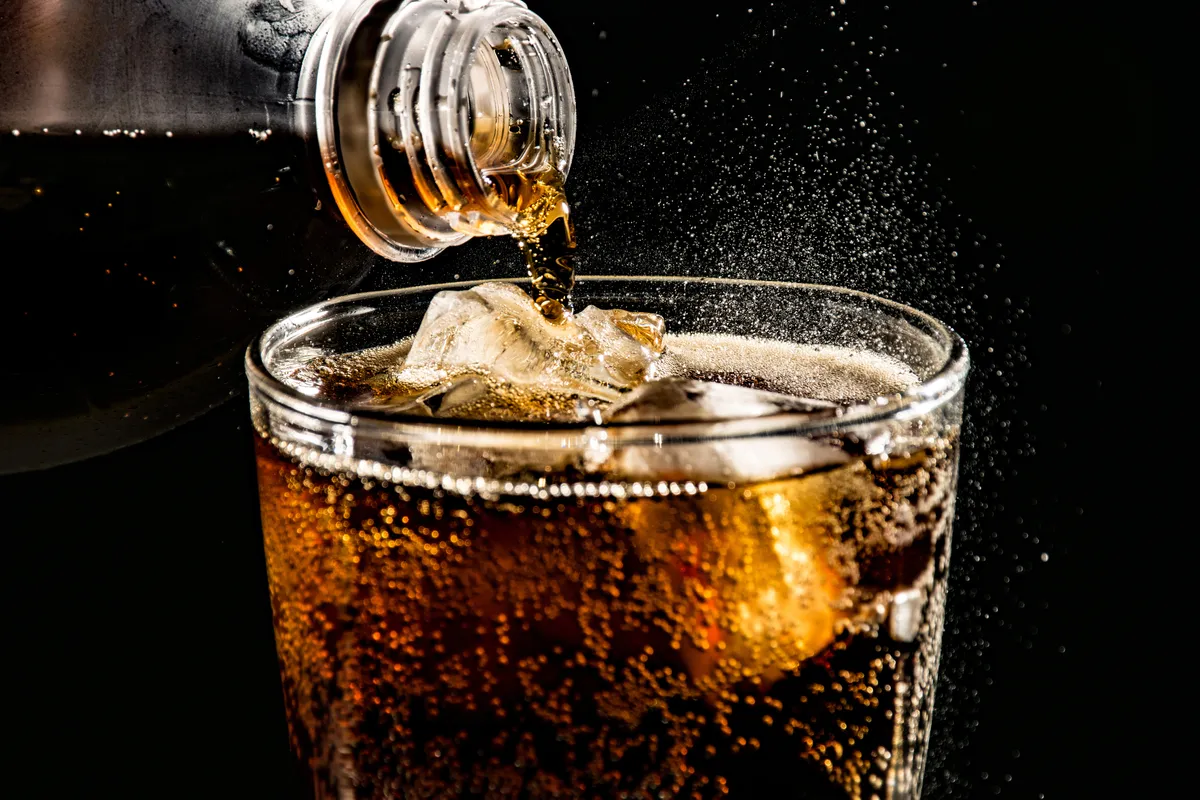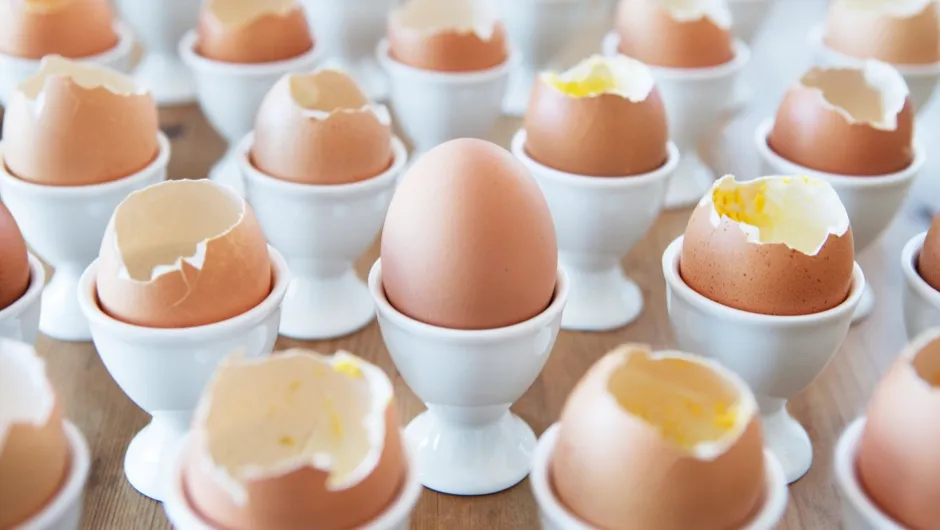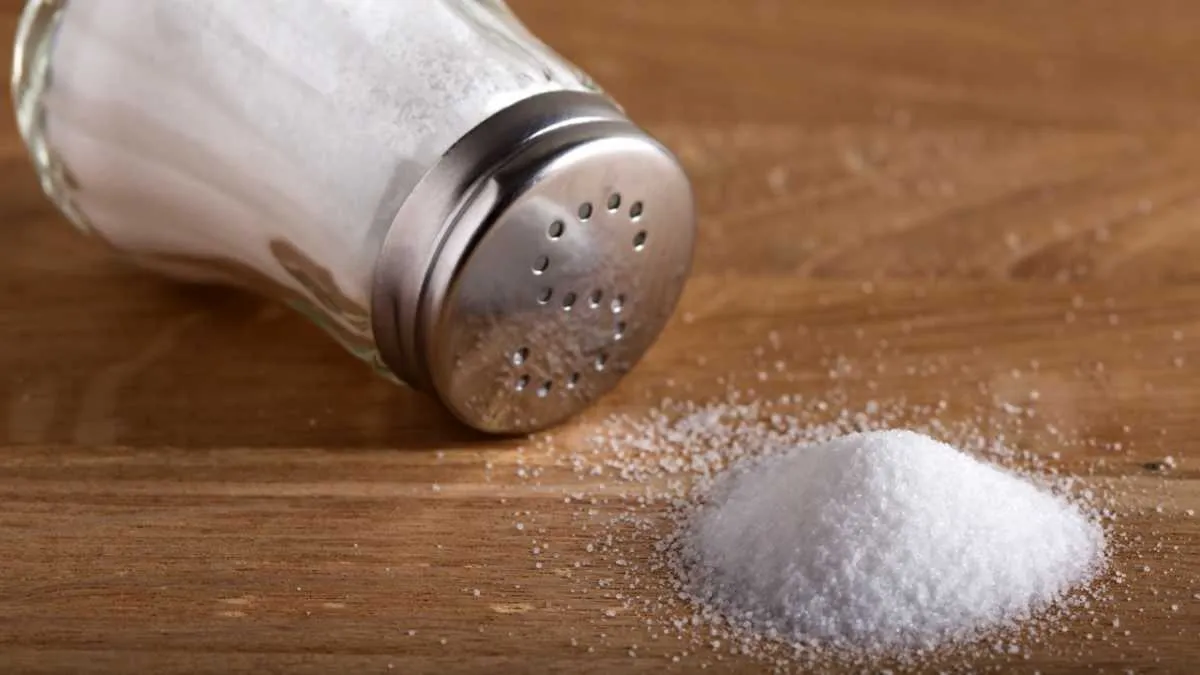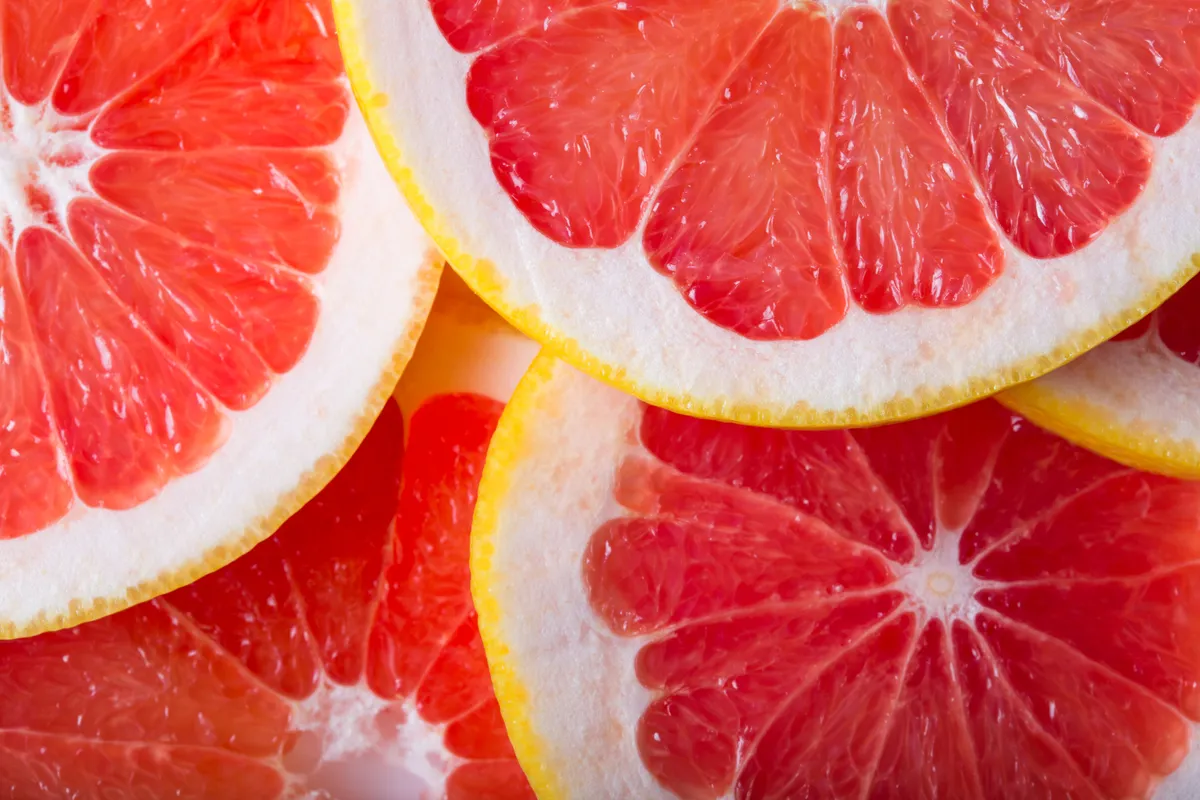The world of food is full of conflicting advice. Drinking coffee is good for you; it will give you cancer. Eggs are part of nature’s natural bounty; they raise your cholesterol. So many claims, so little agreement. Yet despite the headlines there is a fairly consistent body of research that points at the health benefits, or otherwise, of most popular foods. We’re here to sort the facts from the fads. Enjoy!
1
Coffee

There have been numerous claims over the years that drinking coffee will increase your risk of succumbing to a whole range of terrible things. Yet when scientists followed over 120,000 men and women for more than 20 years they found something altogether more surprising. The study, The Relationship Of Coffee Consumption With Mortality, concluded that “regular coffee consumption was not associated with an increased mortality rate in either men or women”. In fact, they found moderate coffee consumption appears to be mildly protective. Based on this and other studies, the most effective ‘dose’ seems to be two to five cups a day. More than that and any benefits drop off. But we simply don’t know what it is in coffee that helps.
The amount of coffee you can safely drink without side effects, such as a temporary rise in blood pressure or insomnia, may be down to your genes, and in particular how much of the liver enzyme CYP1A2 you have. CYP1A2 helps determine the speed at which caffeine is cleared from your body. This could explain why I can drink coffee in the evening with no problems, while one cup in the afternoon has my wife twitching. – MM
VERDICT: Two to five cups of coffee a day are fine, but side effects may be dictated by your genes.
2
Diet drinks

I’m teetotal, so on a night out mine is a diet so drink of some sort. But even though the label on the bottle says sugar-free, research suggests I shouldn’t be fooled into thinking it’s any better for my waistline than a standard version. Health commentators argue there is little evidence that ‘diet drinks’ containing artificial sweeteners actually help people lose weight and therefore should not be recommended as part of a healthy diet. In fact, many existing systematic reviews promoting the health benefits of diet drinks are sponsored by the soft drinks industry itself, and are hence unreliable.
According to a recent review by Imperial College London, these diet drinks stimulate sweet taste receptors, potentially encouraging us to eat food as compensation. Psychologically, we might be more inclined to treat ourselves to something unhealthy, as we’ve had a ‘good’ low-calorie drink. I can vouch for that one.
When it comes to drinking standard drinks versus a diet drink, I still opt for diet. If I’m serious about making the best choice, I’ll opt for water – although I have been known to order a cup of tea on a night out! – SA
VERDICT: Stick to water rather than so drinks and your body (and wallet!) will thank you.
3
Alcohol

You can’t open a newspaper without reading a story about alcohol being good or bad for you, or making no difference at all to your health. So what’s the truth? Well, if you like the odd tipple, there is some good news.
Though it has been challenged, there is a fairly consistent body of evidence that drinking modest amounts of alcohol may protect you against heart disease. A recent study, which was published in the European Heart Journal, followed more than 14,000 adults aged 45 and older for 24 years and found that men and women who reported drinking up to 12 units of alcohol per week (the equivalent of around six glasses of wine) had a lower risk of developing heart failure than those who never drank. They also found that those most likely to have died from any cause over the course of the study had been heavier drinkers, where women were drinking more than 14 units and men were drinking more than 21 units a week. Cheers! – MM
VERDICT: Enjoy up to six glasses of wine a week to potentially reduce your risk of heart failure. Any more could be hazardous to health.
4
Eggs

A few years ago we were being told by nutritionists not to eat more than a few eggs a week on the grounds that eggs contain cholesterol and cholesterol is bad for you. At the time, it was widely believed that elevated cholesterol in our blood is caused by cholesterol in our food. In fact, most of the excess cholesterol in our blood is produced by the liver and is a response to eating too much saturated fat.
A meta-analysis of 17 studies published in the BMJ in 2013 concluded that “higher consumption of eggs is not associated with increased risk of coronary heart disease or stroke”. Whether scrambled, boiled or poached, eggs are a superb source of protein, are rich in vitamins and minerals and make a great start to the day. How do you like yours? – MM
VERDICT: As long as you’re not frying them or smothering them in fat, eggs are an excellent breakfast choice.
5
Red meat

Do you walk round the shops thinking about what to slap on the barbecue, pause by the steaks, pick them up, put them back and then go in search of something healthier? In a restaurant do you order fish, even though you’d secretly prefer lamb?
If you believe the headlines, then eating meat will stop your heart, give you cancer, shorten your life and destroy the planet. The meat which is said to be a threat to health is red meat like steak, lamb, pork and mince. Red meat looks darker thanks to higher levels of haemoglobin and myoglobin, which are the iron- and oxygen- binding proteins you find in blood and muscle.
On the upside, red meat is an excellent source of micronutrients. But on the downside, it’s richer in saturated fat than, say, tofu. It has also been linked to an increased risk of bowel cancer. But overall just how bad for you is red meat?
One recent paper, Meat Consumption And Mortality tried to answer that question. It came to the – perhaps surprising – conclusion that eating moderate amounts of red meat had no effect on mortality, in fact it seemed to be protective. The lowest overall mortality rates in this study were among those people eating up to 80g a day, not those who shunned it. This particular paper was based on findings from the European Prospective Investigation into Cancer and Nutrition (EPIC). In this study, European researchers followed more half a million people in 10 countries for more than 12 years.
The researchers found that although there was a small increase in overall risk for those who ate over 160g day, there was also a higher death rate among people who ate no meat at all. They concluded that “a low – but not a zero – consumption of meat might be beneficial for health. This is understandable as meat is an important source of nutrients, such as protein, iron, zinc, several B-vitamins, as well as vitamin A and essential fatty acids”. In other words, vegans and vegetarians may not have been getting sufficient essential micronutrients.
Now before meat eaters go off rejoicing, there’s a significant sting in the tail. The EPIC study found that eating processed meat, like sausages, bacon and ham, did have a negative effect on health. Over 40g a day (fewer than two slices of bacon) and deaths from heart disease and cancer began to climb. “In this population, reduction of processed meat consumption to less than 20g/day would prevent more than 3 per cent of all deaths,” it said. – MM
VERDICT: Small amounts of red meat are fine, but keep the processed stuff as an occasional treat.
6
Salt

Most of us know too much salt is bad for us. What’s less well-known is that too little is also harmful. We need salt for muscle and nerve activity. If we eat too little, we develop cramps and neurological symptoms, and can even die.
But hold on, that doesn’t mean you can start munching bumper packs of crisps. Most of us consume too much salt. Excess salt intake is linked to high blood pressure, increasing the risk of heart disease or stroke. The NHS recommends that adults should consume 6g of salt a day, but our intake is nearer 8g. Yet working out how much we eat can be tricky because salt is hidden in many foods. A whopping 75 per cent of salt we eat comes from foods like bread, baked beans and biscuits, while salt added during cooking and at the table makes up a small amount of our intake.
And there are other benefits of cutting salt. I often meet patients who cut out fluids during the day to try to reduce their night-time trips to the loo. That’s harmful and can affect kidneys. A recent Japanese study presented to the European Association of Urology congress has found that cutting salt intake can reduce frequency of nocturnal urination. – SA
VERDICT: Keeping salt intake down can help blood pressure stay healthy.
7
Chocolate

I love chocolate, but I have always seen it as a guilty pleasure. So should I feel bad about eating modest amounts?
Chocolate contains cocoa, and cocoa is a good source of iron, magnesium, manganese, zinc and phosphorous. Cocoa is also rich in antioxidant flavonoids. The downside of your favourite chocolate bar is all the added fat and sugar.
So how well does the good stuff stack up against the bad stuff? Chocolate’s main claim to health is its effect on your arteries. In 2012 a systematic review of the effects of cocoa consumption on blood pressure, which looked at 20 studies involving over 800 people, concluded that: “Flavanol-rich chocolate and cocoa products may have a small but statistically significant effect in lowering blood pressure”. But the team pointed out that most of the studies they looked at took place over a short period of time (between two and eight weeks) and the size of the effect was not impressive.
A more recent paper, published in the journal Heart in 2015, also gave hope to lovers of chocolate. In this study, researchers asked nearly 21,000 men and women from Norfolk to fill in detailed food questionnaires and then followed them for an average of over 11 years. What they found was that those eating the most chocolate (up to 99g a day) had the lowest risk of developing heart disease or stroke.
Their conclusion was that “higher chocolate intake is associated with a lower risk of future cardiovascular events”. However, the researchers go on to say there may have been confounding factors at play, such as the chocolate eaters being more active. – MM
VERDICT: The odd square of dark, cocoa-rich chocolate isn’t going to hurt, but the jury is out as to whether it will do you any good.
8
Fruit

An apple a day keeps the doctor away, or so ‘they’ say. Along with the rest of the inhabitants of the fruit bowl, apples have a reputation of being able to lower the risk of mortality.
But how true is this? Plenty of studies out there show that people who eat fruit tend to be healthier than fruit-shunners, and have reduced risks of cardiovascular disease and cancer. This could be because fruit contains vitamins and fibre, which are good for health, as well as antioxidants that repair cells.
Yet the debate around the daily amount of fruit to consume continues. A BMJ study suggests if you can stretch to seven portions of fruit and vegetables you’re doing yourself some real favours. Risk of disease development over the course of the study reduced by 42 per cent for seven or more portions of fruit and veg. The government’s current advice sticks at five daily portions. We still have problems reaching that target, let alone increasing it.
But don’t get your fruit fix by swigging back juices or smoothies. Many fruit juices contain large amounts of water and sugar. And juices that are 100 per cent fruit still contain almost as much sugar as a sweetened drink. You’re better off eating the actual orange than drinking it.
And here’s another excuse to slip that apple into your teenager’s school bag. Recent studies reveal that a high intake of carotene-rich fruit – such as apples, oranges, bananas and grapes – during adolescence is associated with a lower risk of breast cancer. Just three portions of fruit a day could reduce the risk of breast cancer by an impressive 25 per cent. – SA
VERDICT: Start the fruit habit early, but eat it in its natural form rather than squished into juices and smoothies.
9
Butter

In recent years there has been an ongoing debate about butter, which has led to consumer confusion in the supermarket chilled section. Let’s set the record straight.
Butter is a saturated fat. For decades, we have been advised to reduce saturated fat in our diets, centring on the argument that it increases bad cholesterol in the blood, which can clog arteries, causing heart attacks or strokes. Public Health England advises people to cut down on saturated fat, based on a review of 15 clinical trials.
On the other hand, researchers at the University of Cambridge presented a study in 2014, published in Annals Of Internal Medicine, reviewing existing published data. The team stated that there was no significant evidence regarding a correlation between saturated fats and a higher risk for heart disease. Hence the ‘butter is back’ headlines that were splashed all over the internet. But those behind the study warned against over-simplification. They had found that there are different types of saturated fats with varying compositions that all do different things – some good, some bad. While some dairy products might turn out to cut disease risk, that thought wasn’t extended to butter. The team agreed with butter being linked to bad cholesterol.
This is backed up by a recent study by researchers from Harvard, who found that a 5 per cent higher intake of saturated fats, like butter, was associated with a 25 per cent increased risk of heart disease. This supports current guidelines focusing on reducing saturated fat intake and replacing butter with oils high in unsaturated fat.
Nevertheless, according to the study you won’t see any benefits of cutting out saturated fat if you continue filling up on refined carbs like white bread. It’s only by eating complex carbs like vegetables and whole grains that you can slash your risk. And with that, hot buttered toast remains for me an occasional treat. – SA
VERDICT: Not all saturated fat is created equal, but more research is needed. Stick to olive and sunflower oil for cooking, and use butter sparingly.
10
Pasteurised milk

During my rheumatology attachment, my consultant insisted that every patient was given a daily glass of milk. There are recognised health benefits of the white stuff – it’s full of nutrients and helps build strong bones.
Recently, proponents have been claiming that drinking raw milk, rather than pasteurised, offers even more health benefits. But what’s the difference? Raw milk comes from grass-fed cows and is full of nutrients, including beneficial bacteria like Lactobacillus acidophilus. This ‘good’ bacteria produces vitamin K2, improves absorption of nutrients and normalises gut function. Raw milk contains high levels of vitamins, enzymes and calcium. But it can also contain bacteria that cause food poisoning and can be particularly harmful to children, people who are unwell and pregnant women.
Pasteurisation is a process where heat is applied to milk to destroy harmful bacteria. Unfortunately, it kills the beneficial ones too. Still, according to a 2015 analysis by Johns Hopkins University, consumers are 100 times more likely to get food-borne illnesses from raw milk than pasteurised. For consumer safety, European and North American legislation mandates the pasteurisation of milk, and that’s what we buy from shops.
If you want to give raw milk a try, you’ll have to go to specialist outlets, like farm shops and markets. Unpasteurised cheeses, like Parmesan, are more widely available because harmful bacteria occur in such low numbers. – SA
VERDICT: Milk is a great way to get calcium and other nutrients, but pasteurised is safer.
This is an edited version of Is anything good for you any more? in issue 308 of BBC Focus magazine – subscribe here to make sure you get the full features delivered to your door before they hit the newsstands.
Follow Science Focus onTwitter,Facebook, Instagramand Flipboard